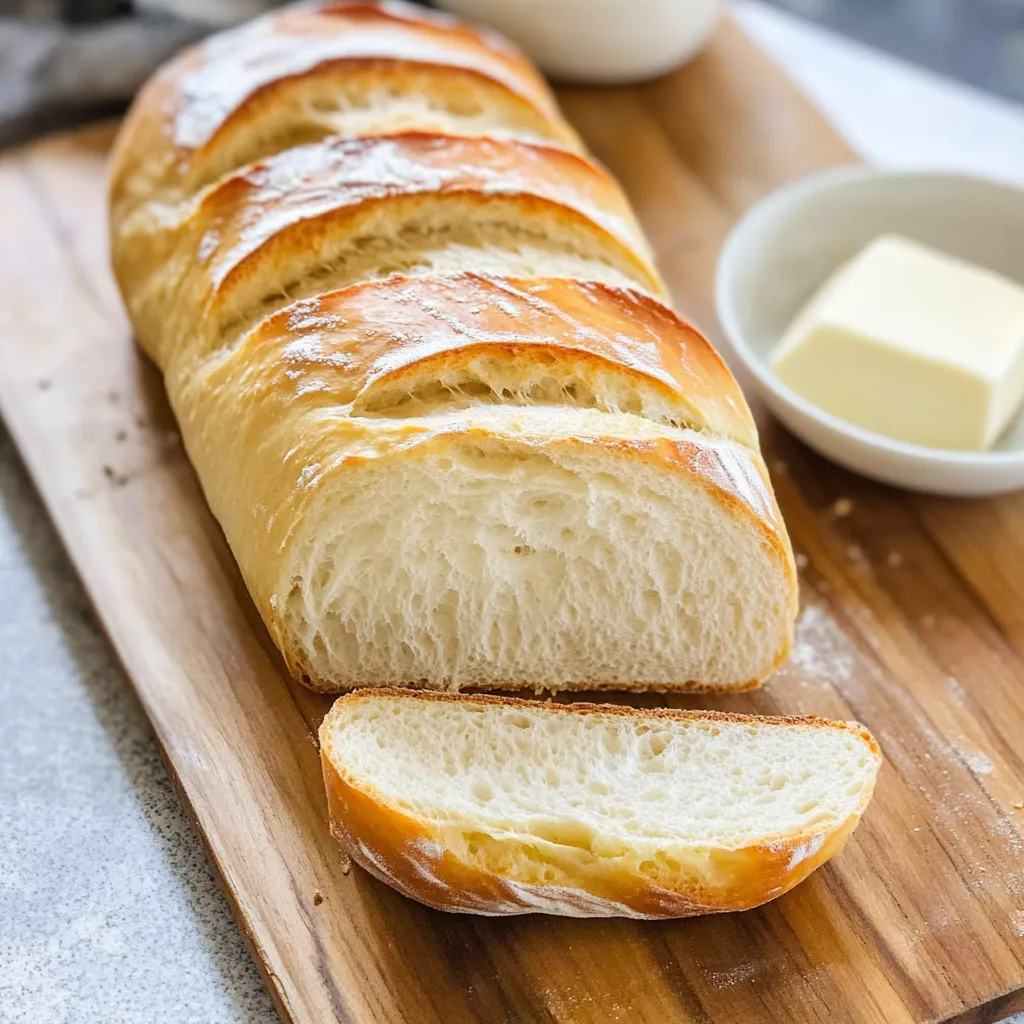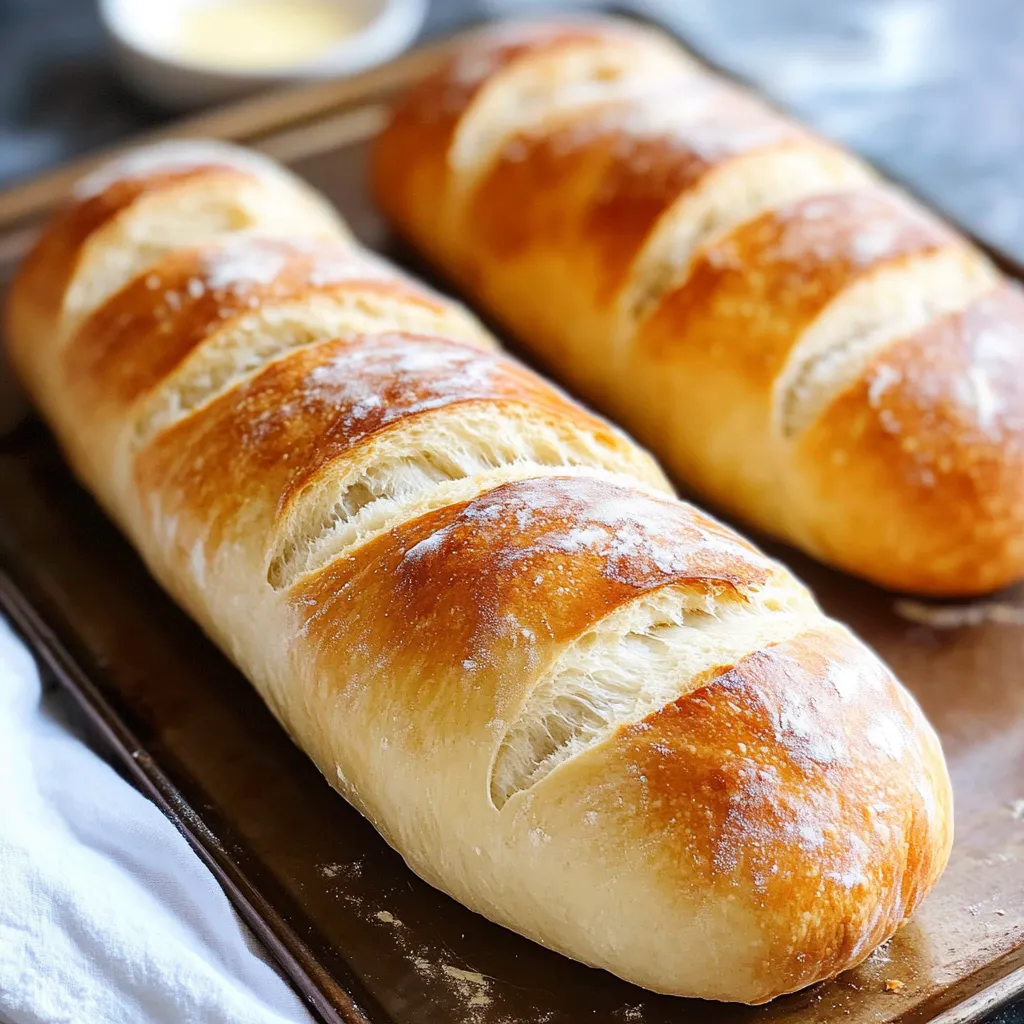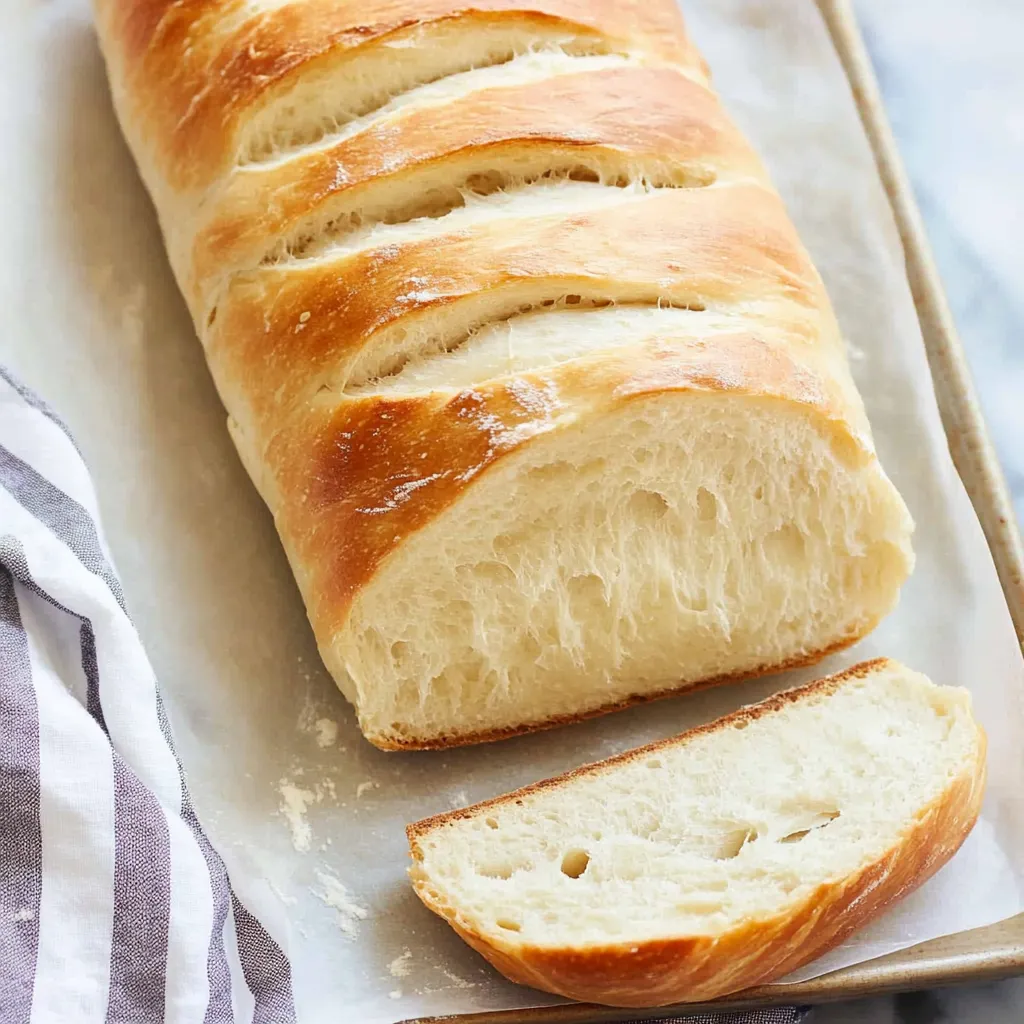 Pin it
Pin it
Nothing beats the smell of homemade French bread filling your home. This bread gives you that amazing mix of crunchy outside and soft inside that makes any dinner feel special. I've spent years tweaking this 90-minute approach in my kitchen, and honestly, it turns out bread that's just as good as what you'd buy from your neighborhood bakery.
The first time I baked this bread, my family huddled around the counter, tearing off warm chunks and watching them steam. Seeing their happy faces convinced me there's something magical about homemade bread that you just can't get from store-bought loaves.
Complete Ingredients Breakdown
- Bread flour: Has more protein than regular flour, giving you that chewy texture and firm crust that makes French bread so special
- Active dry yeast: The key to making your dough rise, always grab fresh packets for the best results
- Warm water: Must be around 110°F to wake up the yeast without damaging it, helping your dough rise properly
- Fine sea salt: Brings out all the flavors and helps control how the yeast works, creating that perfect texture inside
Making Your Fantastic Loaf
- Yeast Activation:
- Mix 110°F water with yeast and a tiny bit of sugar in a clear bowl. You'll know it's working when it turns bubbly and smells like bread starting to form.
- Initial Mixing:
- Slowly add flour to your bubbly yeast mixture, waiting until each scoop disappears before adding more. You'll start to see your dough taking shape right before your eyes.
- Dough Development:
- Knead with steady, even movements, feeling the dough change from rough to silky smooth. As you work, it'll get stretchier and less sticky as the gluten forms.
- Shaping Process:
- Cut your dough in half and roll each piece into a tight log shape. Pull the surface tight as you roll to make sure it rises evenly and looks professional.
- Final Touches:
- Make clean slashes across the top so the bread can grow properly while baking. Spray a bit of water on the surface to help create that perfect crust.
 Pin it
Pin it
My grandma taught me to knock on the bottom of bread loaves when I was little, showing me how to listen for that empty sound. This simple trick has worked every single time and makes me feel connected to all the bread makers in my family before me.
Tasty Ways To Enjoy Your French Bread
Your fresh-baked loaf can become so many different meals. Cut thick slices for awesome sandwiches, chop it into squares for crunchy croutons, or serve it with a hot bowl of soup. Each way of eating it brings out something special about the bread.
Putting Your Own Twist On It
Try mixing in some herbs de Provence for extra flavor, or use part whole wheat flour to make it healthier. You can shape it into round loaves instead of long ones, or make small dinner rolls that everyone at the table gets to enjoy.
Keeping Your Bread At Its Best
Put your bread in a paper bag on the counter for up to two days to keep that perfect crust. If it gets a bit stale, just sprinkle some water on it and warm it in the oven at 350°F for about 5-10 minutes to bring it back to life.
 Pin it
Pin it
After making this bread countless times, I've learned that waiting is really the secret ingredient. Taking time for the dough to rise fully and fighting the urge to cut into hot bread always makes the end result better. This isn't just a recipe anymore. It's become a way to honor tradition, practice good technique, and enjoy the pure joy of sharing something homemade with people I care about.
Frequently Asked Questions
- → Is a stand mixer required for this bread?
- Not at all! You can make it by hand with a large mixing bowl and knead it on a floured counter for about 8-10 minutes till it's smooth.
- → How do I know it's baked enough?
- When the crust looks golden and tapping the loaf's bottom makes a hollow sound, it's ready! For precision, check if the inside hits 190°F with a thermometer.
- → What went wrong if my bread didn't rise?
- Your water may have been too hot or your yeast could be old. Keep the water around 105°F and ensure your yeast is fresh for best results.
- → Can I add extras like herbs or cheese?
- Sure! Mix 1-2 tablespoons of dried herbs like rosemary or thyme for flavor. For cheese, fold in 1 cup of shredded gruyère or parmesan after the first rise.
- → How do I reheat leftover bread to keep it fresh?
- Sprinkle it with a little water, wrap in foil, and warm up in a 300°F oven for 5-10 minutes. This keeps it soft inside and crisp outside.
